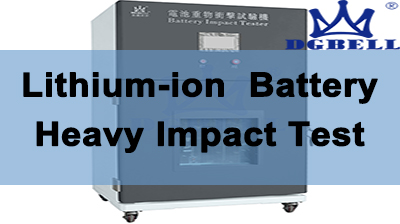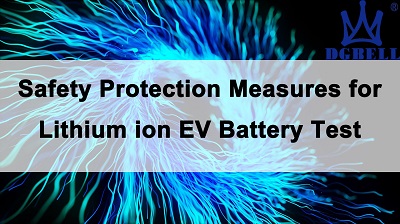Bài viết mới
O Melhor Cassino E Apostas Esportivas Do Brasil ᐈ Pin-u
برنامج المراهنات الرياضية تحميل التطبيق العميل Eg 1xbet Co
Aviator’ı Iphone Android Computer Mac’e İndirin Resmi Web Sites
Categories
- 1Win AZ Casino 1
- 1win Brazil 1
- 1win casino spanish 1
- 1win fr 1
- 1win India 1
- 1WIN Official In Russia 2
- 1win Turkiye 5
- 1win uzbekistan 2
- 1winRussia 1
- 1xbet casino BD 1
- 1xbet india 1
- 1xbet KR 1
- 1xbet malaysia 1
- 1xbet pt 1
- 1xbet russia 2
- 1xbet Russian 2
- 1xbet russian1 1
- 22bet 1
- 22Bet BD 3
- aviator brazil 1
- aviator casino DE 2
- aviator casino fr 2
- aviator IN 1
- aviator ke 1
- aviator mz 1
- aviator ng 8
- b1bet BR 1
- Bankobet 3
- Basaribet 1
- bbrbet colombia 1
- bbrbet mx 1
- bizzo casino 1
- casibom tr 1
- casino 8
- casino en ligne 2
- casino en ligne fr 1
- casino onlina ca 2
- casino online ar 1
- casinò online it 1
- casino-glory india 1
- casinos 1
- crazy time 1
- glory-casinos tr 1
- Kasyno Online PL 3
- king johnnie 1
- Maribet casino TR 1
- Masalbet 1
- mostbet ozbekistonda 3
- Mostbet Russia 3
- Mr Bet casino DE 1
- mx-bbrbet-casino 1
- online casino au 1
- onlone casino ES 2
- ozwin au casino 2
- PBN 1
- pelican casino PL 3
- pinco 1
- plinko 1
- plinko in 1
- Tin Tức 127
- Tin Tức Công Nghệ 233
- Tin Tức Công Ty 13
- Triển Lãm 11
- verde casino hungary 2
- verde casino romania 1
- Швеция 1
Nội dung chính

The thermal stability of lithium-ion batteries is sensitive to temperature, overcharging, compression, or collision, and is prone to combustion and even explosion. Improving the safety of lithium-ion batteries to avoid safety accidents is one of the key technologies for electric vehicles.
The fundamental reason for the combustion or explosion of lithium-ion batteries is the rapid increase in temperature caused by thermal runaway, ultimately reaching the ignition point and causing combustion, or the production of a large amount of gas due to the reaction, resulting in an explosion due to the internal pressure exceeding the pressure that the shell can withstand.
For lithium-ion battery packs in electric vehicles, a large number of individual batteries are assembled in battery boxes.The thermal coupling effect between batteries makes thermal management more complex, coupled with the harsh working environment of electric vehicles, which results in large fluctuations in battery output power and frequent charging and discharging. Therefore, safety issues are more worthy of attention. Compared to individual batteries, there are also differences in safety protection measures for lithium-ion battery packs. Therefore, it is necessary to study relevant safety measures. Reasons for heating and explosion of lithium-ion batteries
Reasons for Heating of Lithium-ion Batteries
During the charging and discharging process of lithium-ion batteries, the active substances in the positive, negative, and electrolyte undergo chemical and electrochemical reactions, releasing heat and causing the temperature of the battery to rise. When heat accumulates to a certain extent, thermal runaway occurs, leading to combustion and explosion of lithium-ion batteries. By analyzing the combustibility and smoke generation of three key components of lithium-ion battery, such as diaphragm, positive and negative plates, and taking the fire risk index of lithium-ion battery as the evaluation index, it can be seen that the main hazard of lithium-ion battery fire is diaphragm, followed by negative and positive plates.
If the rate of heat generation in a lithium-ion battery system exceeds the rate of heat dissipation, the temperature will continue to rise. The temperature rise not only causes combustion due to reaching the ignition point of the reactant, but also further increases the system temperature due to thermal runaway, accelerating the reaction of active substances and producing a large amount of gas. The battery explodes due to a sharp increase in internal pressure. Especially during the battery charging and discharging process, when the ambient temperature is high, the temperature of some battery cells is prone to exceed the allowable usage temperature. It can be seen that the explosion of lithium-ion batteries is a thermal explosion caused by the accumulation of reaction heat.
Lithium ion batteries generate and dissipate reaction heat both during normal use and abuse. Electric vehicle users cannot directly perceive the generation and dissipation of reaction heat, nor can they intervene directly. Therefore, the main measure to avoid lithium-ion battery explosions is to use materials with good thermal stability to produce lithium-ion batteries.
External Reasons for the Explosion of Lithium-ion Batteries
a. When a lithium-ion battery is compressed or punctured by an object, the insulation membrane between the positive and negative poles may be damaged, resulting in an internal short circuit. When there is an internal short circuit, the battery will discharge a large current and generate a large amount of heat.
As the temperature of the battery increases, the insulation membrane between the positive and negative electrodes melts, making the internal short circuit more severe and generating more heat. A large amount of heat will cause the electrolyte to decompose and produce a large amount of gas. When the internal pressure of the battery exceeds the pressure that the shell can withstand, an explosion will occur. Internal short circuits in batteries mainly occur in two situations:
- When lithium-ion batteries are physically damaged, such as when the vehicle is crushed or punctured by sharp objects during a collision;
- Internal short circuits caused by adverse factors in the production and manufacturing process, such as internal short circuits caused by small metal pollutants in the diaphragm, or short circuits caused by metal ions precipitation at the negative electrode.
b. When the positive and negative poles of a lithium-ion battery are subjected to artificial or faulty short circuits, the discharge current of the battery will be large, and the heat generated by high current discharge will cause the temperature of the battery to rise. The high temperature will cause the diaphragm between the positive and negative poles of the battery to contract or completely damage, resulting in internal short circuits. Possible reasons for external short circuits in batteries include: human error causing a short circuit between the positive and negative poles of the battery, or metal objects falling off the battery box directly overlapping the positive and negative poles of the battery. In addition, a faulty short circuit in the drive motor controller can also cause an external short circuit in the battery.
c. If the temperature of the battery is too high and reaches the melting temperature of the positive and negative insulation membranes, it can lead to internal short circuits and, in severe cases, explosion accidents. In hot summer weather, when the vehicle stops, the natural heat dissipation of the battery box deteriorates, and the reflected heat from the ground and solar radiation heat can quickly increase the temperature of the battery box, leading to excessive battery temperature. In addition, insufficient heat dissipation in the battery box, or prolonged high-power driving of electric vehicles, can cause the temperature inside the battery box to be too high.
d. When a lithium-ion battery is overcharged, a large amount of lithium ions will overflow from the positive electrode. If the lithium intercalation ability of the negative electrode is poor, lithium ions will deposit on the surface of the negative electrode, forming dendritic crystals. The growth of dendritic crystals can cause internal short circuits in the battery, and in severe cases, explosion accidents can occur. Even though the negative electrode has a strong lithium intercalation ability, as lithium ions overflow from the positive electrode, the solvent is rapidly oxidized and generates a large amount of heat, causing the battery temperature to rise. Then, the reaction between the negative electrode and the solvent occurs simultaneously, releasing more heat, which will lead to an explosion accident caused by high battery temperature. Electric vehicles, especially hybrid electric vehicles, are prone to overcharging of lithium-ion batteries due to frequent regenerative feedback braking when driving in urban areas.







